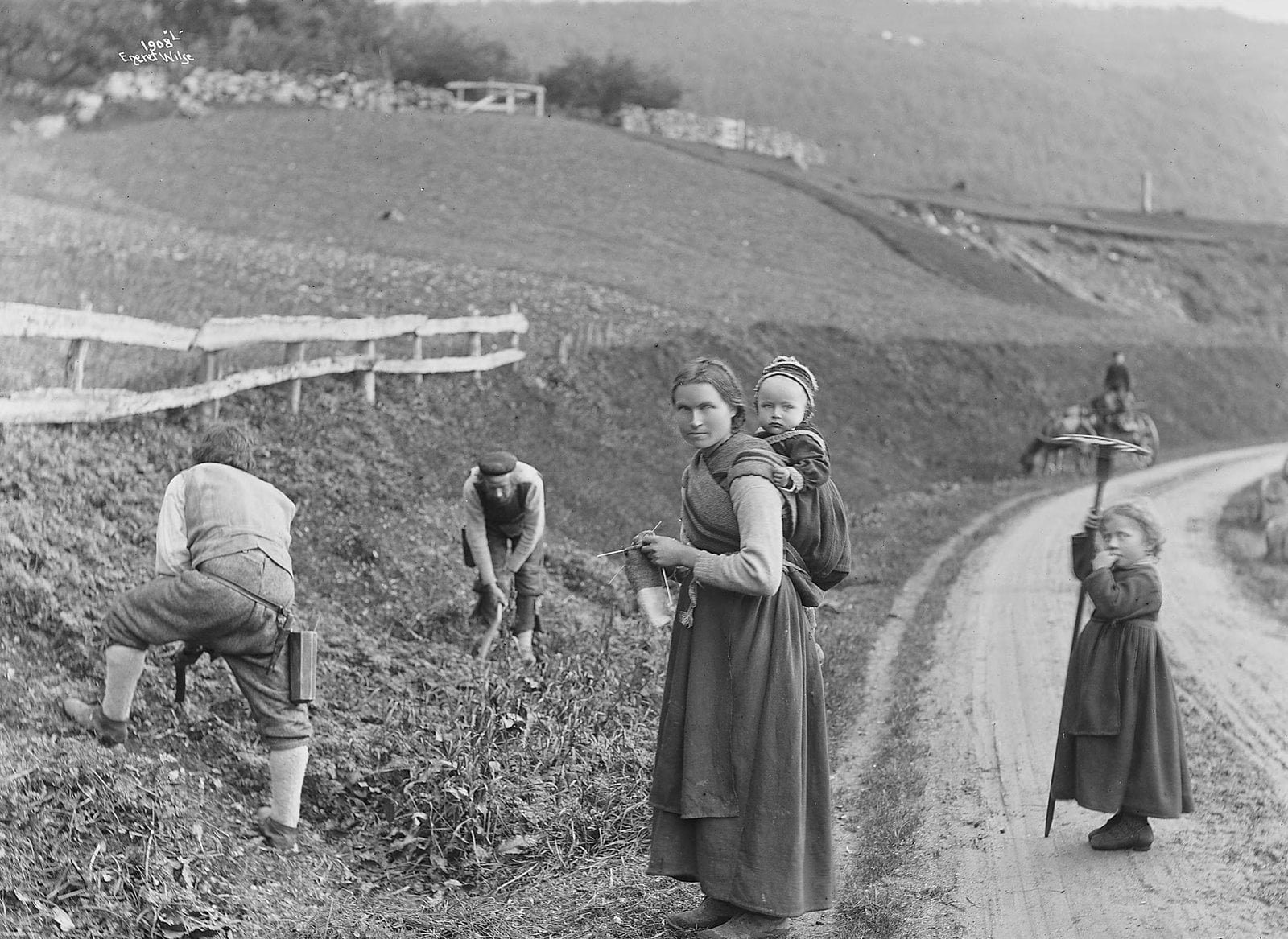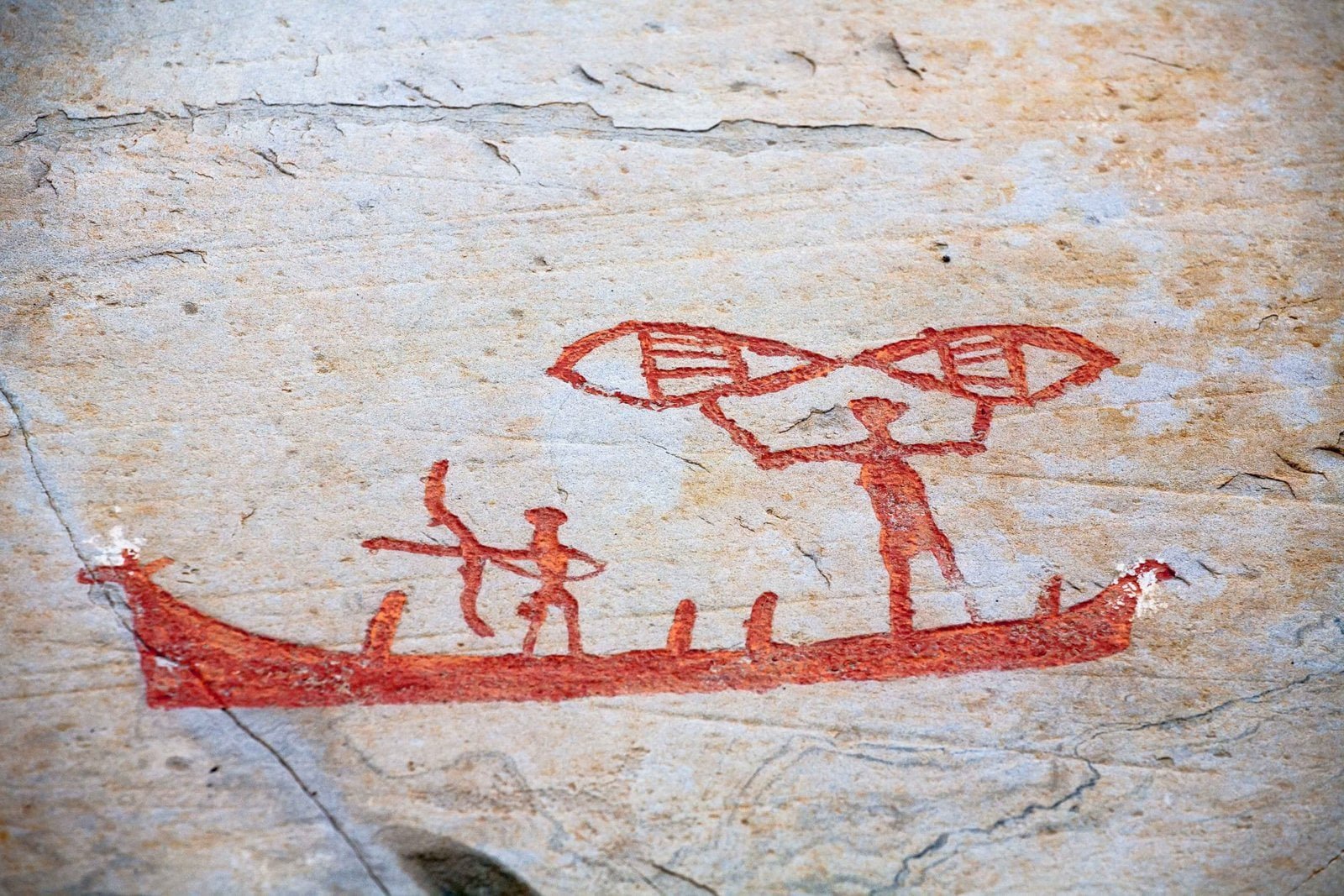Mother Nature dictated
If we go back far enough in time, most of the Norwegians were either fisher-hunter-gatherers – or farmers – or a varied mixture of the two.
Mother Nature dictated the seasons and how people lived their lives.
In a climate like the Norwegian, with short summers and long and cold winters, people’s key focus during the summer months was to secure food and warm clothing for the winter.
The annual cycle was forever the same, generation after generation.
The calendar-stick
The old Norwegians used a wooden calendar-stick to guide them through their working and spiritual year. They called it a primstav.
People often gave the calendar-stick the shape of a sword, with the summer season on one side of the blade, and winter on the other.
A string of notches, cut into the wood, marked the days. Additional carved-in symbols marked key events.
Summer ran from 14 April to 13 October – and winter from 14 October to 13 April.
Midsummer’s Eve fell on 13 July – and Midwinter’s Eve on 13 January (some sources say 12 January).
The Norwegians were Catholics until AD 1537
Christianity came to Norway around AD 1000, during the Viking era. What we often forget today, is that the Norwegians were Catholics until the Danish-Norwegian Protestant Reformation in AD 1536-37.
Prior to the Reformation, Catholic holidays and feasts were often used as markers for when practical sub-seasons or events should start or take place during the working year. This also applied to the calendar-stick.
One such holiday was the feast day of Saint Knut – Knutsok – on 10 July. Knutsok marked the beginning of the haymaking period – høyonna.
To mark this day, the calendar-stick often had a carving of a rake, a scythe, a spear, or a crown.
Replaced by the almanac
With time, the printed almanac replaced the old calendar-stick.
The first Norwegian almanac came in 1644, printed and published by Tyge Nielssøn, and consisted of 48 pages.
However, it took a long time still before the average person could read and write, and the calendar-stick survived well into our own time.
With the calendar-stick, the use of old Catholic feasts and holidays also lingered on. Even today, the Norwegians refer to Midsummer’s Day as Sankthans or Jonsok – St John the Baptist Day – centuries after the Protestant Reformation.
EGP.00026











